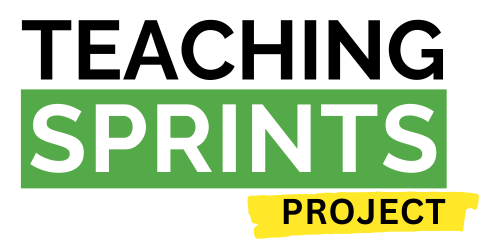A Starter for Embedding Different Kinds of Practice in Instruction
Embed opportunities for retrieval practice
Active recall trumps passive review.
🧩
What problem does it solve?
We teach content, but the students aren’t remembering it.
❓
Why should I use it?
Actively retrieving information (pulling information "out") from long-term memory helps to strengthen memories and secure learning. We want to activate our recall memory more than our recognition memory. We want to decrease the extraneous load on our students' working memory by embedding knowledge into their long-term memory.
If we can increase how often the learner has to retrieve information, “every time that information is retrieved, or an answer is generated, it changes that original memory to make it stronger” (Jones, 2020).
Recognition memory: need only to match current content with previous exposure to the same information eg. Multiple Choice Questions
Recall memory: one must actively retrieve information from the past with few or no guiding cues to help. Eg. Open-ended questions or short answer
🚩
When can I use it?
Daily, weekly and monthly reviews
How could you do it?
Use flash cards
Ask students to write down as much as they remember about a lesson
Low or no-stakes quizzes
☝️ Common Mistakes
Undertaking passive review strategies such as re-reading a book passage or copying notes.
Thinking there isn’t enough time to do retrieval practice.
Finishing activities without students knowing if they were right or wrong
Thinking that students understand something if they get it right once or at the end of a lesson.
Thinking students learnt it just because they had exposure to the content.
How can I make it even better?
Combine with spaced practice to take advantage of the forgetting phase because this forces students to relearn them next time which actually strengthens their memory.
Use interleaving and mix up similar-themed topics. This forces students to think about similarities and differences.
Check for understanding to ensure students are actually receiving feedback on why they were right or wrong.
How could I measure impact?
Assess student learning outcomes of material that has been revised using retrieval practice
In the use of pre/post testing, try giving students the post-test immediately after teaching and then repeat this process 2-4 weeks later, taking note of what needs reinforcing after the forgetting phase.
Example
-
Recent NAPLAN and Progressive Achievement Test (PAT) data made it evident that there were serious gaps in students’ learning. Teachers acknowledged that there was content that had not been looked at for over 12 months. The school had recently decided to trial using the Teaching Sprints process for PL and one of the school leaders suggested they start with the video from the Science of Learning Research Centre - Embed Opportunities For Retrieval Practice. They used the Boulder, Pebble, Sand Protocol to get to the granular level of detail of what they would actually be doing in the classroom.
Boulder: Embedding Different Kinds of Practice in Instruction
Pebble: Retrieval Practice
Sand: Use flashcards for retrieval practice at the start of every lesson.
Teachers collaboratively developed 20 flashcards (each teacher had different topics) each for Year 9. There were 5 teachers, so by the end of their session, they had 100 flashcards!
-
Each lesson, Year 9 students went through as many of their set of flash cards as they could in 10 min. Using the Leitner System, if they got it wrong they put it in one pile and if they got it right they put it in another and the ones that were incorrect would be added to the “everyday” pile.
Intentional observations and evidence collection
By the Check-In Meeting, teachers reported that they already had some students achieving a 100% success rate for all 100 cards! Teachers had taken the initiative to continue to develop cards and they also had some of their students put them together as well.
-
Teachers were so enthused by the results that they decided to extend this for the other Year groups and scheduled some more collaborative planning time to do this. They had also come across Carousel Learning and were considering if this would be a useful tool.
Discussion of relevant evidence
One of the teachers made the suggestion of incorporating some other retrieval practice techniques in order to keep the students actively thinking (some of them may have just been memorising the answers).
For More Information
Website: retrievalpractice.org/
YouTube: The Learning Agency Retrieval Practice | Use Low-Stakes Tests To Promote Learning | Science of Learning Series
YouTube: Jon Hutchinson - The Leitner System

